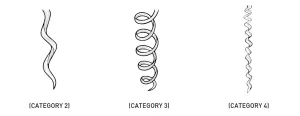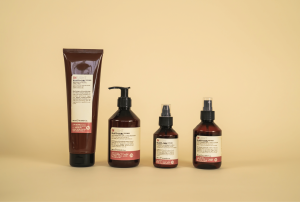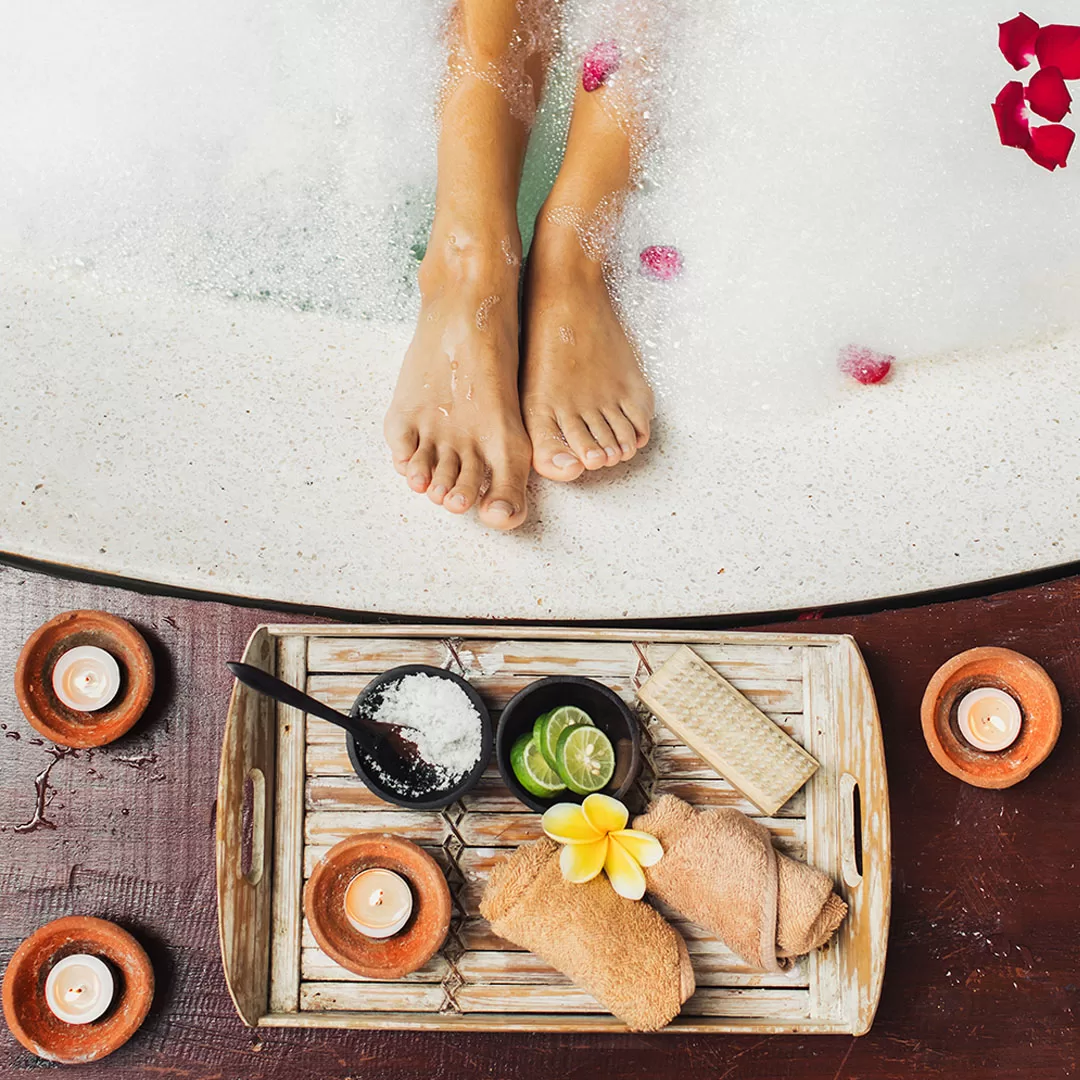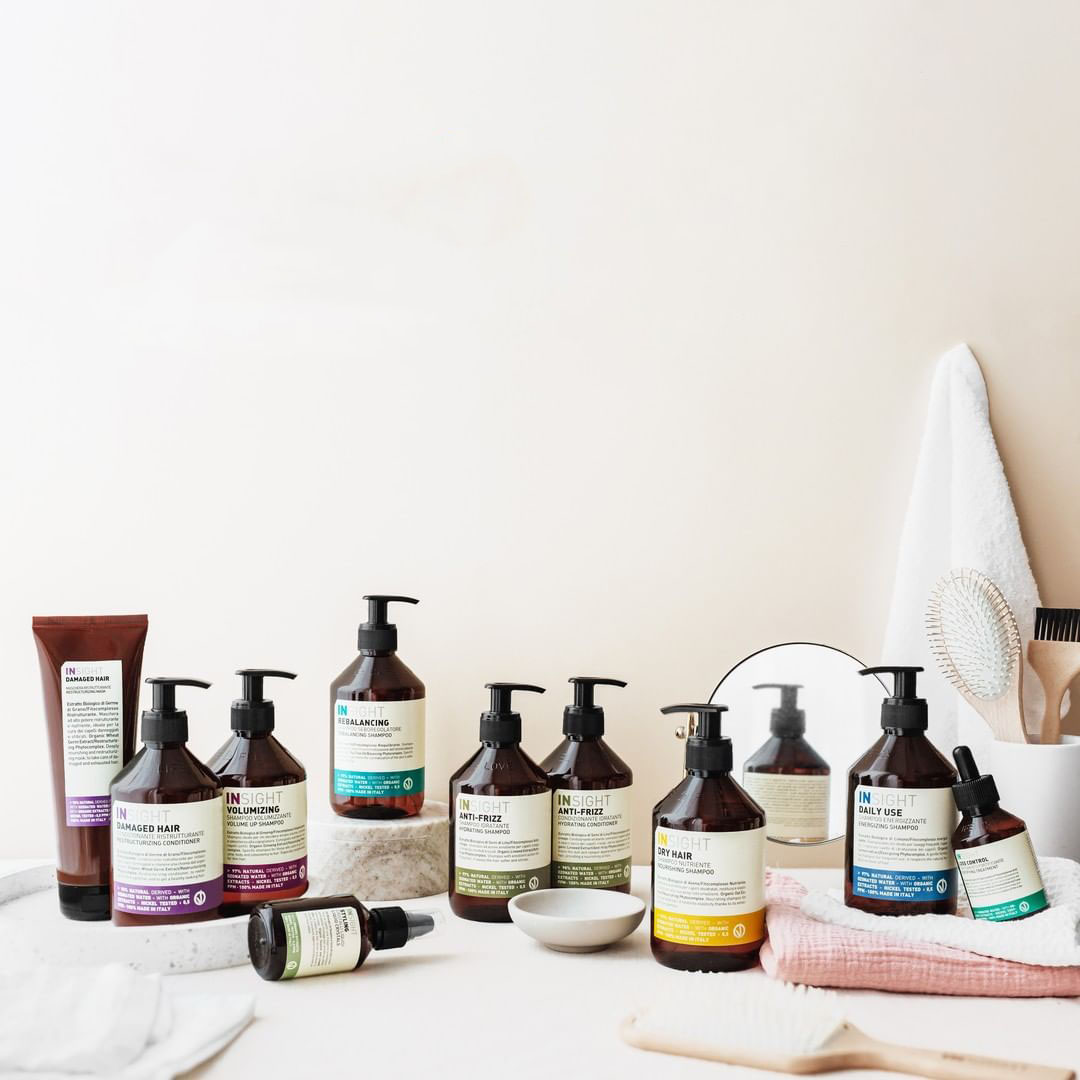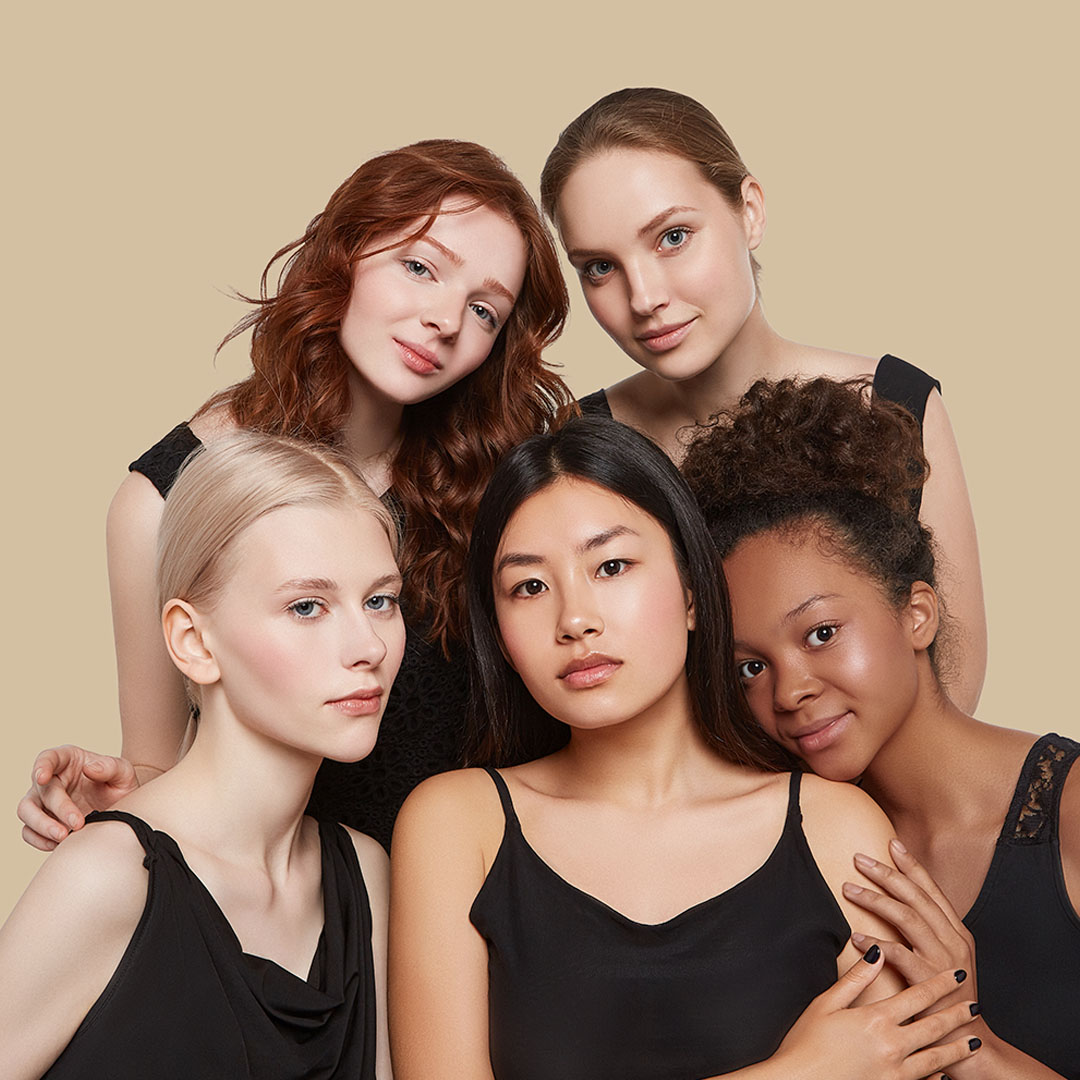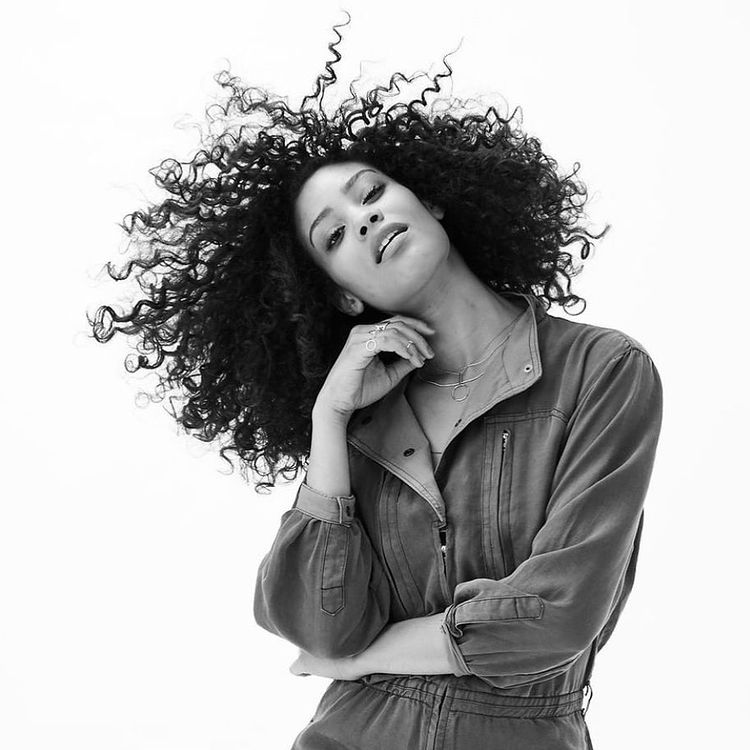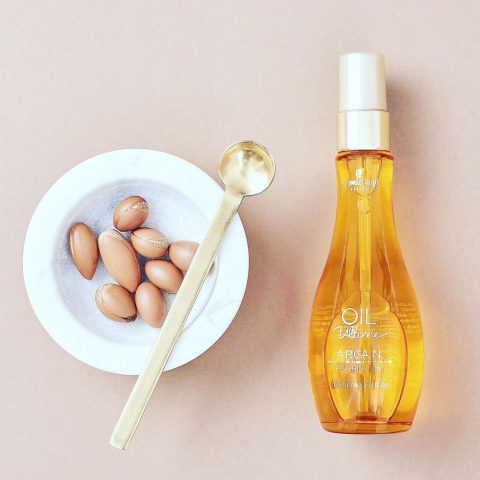Just like with skin types it’s crucial for implementing an effective skincare regimen, determining your actual hair type can play a massive role in the efficacy of your daily hair care routine. Did you know there are 12 different hair types?
The different characteristics of our individual hair types call for different hair care routines to bring out our hair’s fullest potential. In addition, learning your hair type is only half the battle. It is also just as important to understand how the right hair products can help you to achieve the best hair care routine.
Not every product will work for every hair type, so correctly identifying your hair type is key to determining the best care routine for your hair. Below is everything you need to know about determining your exact hair type and what that means for your daily hair care routine.
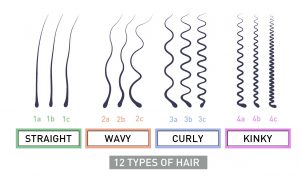
Type 1: Straight Hair
Straight hair (Type 1) lies flat, or straight on the scalp. As the hair’s natural oils are able to travel from the scalp to the ends, Type 1 hairs reflect the most sheen. There are three subcategories for straight hair:
-
Type 1A hair is very straight and fine, with no hint of wave or curl. As it is so straight and fine, when the natural oils travel to the ends, it tends to cause it to look like oily hair. It is the rarest hair type and is common among women of Asian descent.
-
Type 1B hair is straight, but has more volume than Type 1A. Its medium texture can generally hold curls giving the hair more texture and movement.
-
Type 1C hair is straight and is usually coarse and thick, which can result in frizzy hair depending on the environment or climate. When air-dried, this hair type can achieve a tousled look, while still lying flat on the scalp.
Pro Tip: If your hair is straight, brushing will be the cornerstone of your routine. Daily brushing helps keep your hair healthy and clean, so go take a few minutes every morning or night to brush it all out
Use Natural Hair Products
While your hair may seem lifeless and dull due to a lack of volume, rather than overcompensating with lots of products, you should focus on choosing products that contain natural ingredients like Organic Lemon Extract, Apricot Butter, Sunflower Oil, Corn Germ Oil to preserve your natural hair oils. This also provides your hair with a healthy boost without weighing it down. Type 1 hair should wash their hair regularly with shampoo to avoid oily-looking locks.
Look for shampoos that are specially formulated for regular hair-washing and prevent oil build-up at the same time. The good news is you can actually train your hair to be less greasy. As you extend the time between washes, your hair will gradually produce less and less oil as you are no longer stripping your strands of the natural and essential oils your scalp produces.
Make it your mission to find the mildest shampoos such as INSIGHT DAILY USE that’ll clean your hair without drying it out, and this sulfate-free shampoo will generally clean the hair just as effectively as those that contain sulfates.
Avoid Sleeping With Wet Hair
If you have Type 1 hair, it is best to avoid sleeping with wet hair to prevent hair frizz in the morning. However, if you need to sleep with damp hair, spray leave-in conditioner and pull your hair into a loose braid to prevent frizziness.
Type 2: Wavy Hair
Wavy hair (Type 2) hair types are naturally wavy and form an “S” shape. It is thicker than Type 1 hair types, and can be considered a medium between straight and curly hair. Because of its slight texture and shape, it is not as oily as Type 1.
-
Type 2A hair is fine and thin with individual strands forming an “S” shape when dry. It is easy to use styling products to curl or straighten Type 2A hair.
-
Type 2B hair is wavy and slightly frizzier than Type 2A hair. When dry, individual strands create an “S” shape with some frizz.
-
Type 2C hair waves start from the scalp and are thicker than other Type 2 subcategories. This coarse hair type is the most prone to frizz and forms an “S” shape when dry.
Pro Tip: Wavy types can benefit from volume and moisture, so look for products that provide a balance of these elements
Hydration is Key
As Type 2 hairs have less natural hair oil, it is important to choose a sulfate-free shampoo to ensure that your hair is not drained of all its natural moisture. Sulfates in shampoo’s strip your hair of its natural oils and moisture causing frizzy and dull hair.
Thankfully we live in a world where there are numerous alternatives to this cheap potentially harmful ingredient of Sulfate. One of my favourites is coconut oil, which can create a lovely lather combined with other ingredients. All of INSIGHT shampoos are formulated without SLS and SLES (Sodium Lauryl Sulfate and Sodium Laureth Sulfate, which are considered aggressive and potentially irritating surfactants.
Instead INSIGHT choose to use a gentler cleansing agent, derived from coconut. Using a more dermo-compatible cleansing product means protecting scalp health and balance over time.
To take your hair care routine a step further, applying a hair mask once a week can improve your hair texture drastically. Healthy and moisturised hair is less likely to knot and tangle, so along with regular conditioning, try a weekly hair mask or deep conditioning. Hair masks will hydrate and smooth your dry cuticles, leaving your locks silky and soft. We recommend to apply INSIGHT Anti Frizz Hydrating Mask to wet hair, distributing evenly and leaving it on for 3 – 5 minutes.
Avoid Heat Styling Tools
When it comes to styling your hair, people with Type 2 hair types should minimise the use of hot styling tools or chemical hair treatments that can damage the cuticle layer of your hair shaft. If you must use them, you should apply heat-protection products to protect your hair and keep it damage-free.
Type 3: Curly Hair
Curly hair (Type 3) hair types are naturally curly and classified as spiral curls. Type 3 hairs form ringlets that are naturally defined and more prone to dryness, tangles, frizz and breakage. As the follicle does not lay flat, this hair type tends to be dry.
-
Type 3A hair is fine and shiny with loose curls. This type of curly thick hair is easily defined without the use of styling products and is prone to slight frizz.
-
Type 3B hair has curls that are medium to tight springy curls. Similar to Type 3A, it is prone to frizz.
-
Type 3C hair has tight and thick curls. The curls of this hair type normally have a lot of texture.
Pro Tip: With improper care, the natural fall of the hair shafts is disrupted, so it’s best not to fight curly hair but help it find its shape. Curly hair is best styled with fingers, rather than brushes when damp or wet. Leave in conditioners, hair masks, and subtle use of styling products when the hair is damp will allow the curls to naturally find their shape, while maintaining shine and preventing frizz.
Hydration is Key
Type 3 hairs have less natural hair oil, it is important to choose a sulfate-free shampoo to ensure that your hair is not drained of all its natural moisture. Sulfates in shampoo’s strip your hair of its natural oils and moisture causing frizzy and dull hair. We recommend to apply INSIGHT Anti Frizz Hydrating Mask to wet hair, distributing evenly and leaving it on for 3 – 5 minutes.
Avoid Heat Styling Tools
When it comes to styling your hair, people with Type 2 hair types should minimise the use of hot styling tools or chemical hair treatments that can damage the cuticle layer of your hair shaft. If you must use them, you should apply heat-protection products to protect your hair and keep it damage-free.
Type 4: Coiled/Kinky Hair
Type 4 hair types are most common among African Americans. Unlike Type 3 hair, coiled or kinky hair (Type 4) is tightly curled with defined ringlets (coils) and maintains its hair shape whether it is dry or wet. This hair type tends to be fairly coarse in texture, and is prone to damage by heated hair styling products.
Due to the shape of individual hair strands, natural hair oils are unable to travel far down the hair shaft. People with curly or wavy hair types often experience dry and itchy scalps, and this can require further interventions to control the itchiness to restore healthy hair.
-
Type 4A hair is usually in tight and springy coils. Hair strands of this type typically shrink down to half its length when dry. This type of hair has the most definitive curl pattern of the Type 4 hair category.
-
Type 4B hair has tight curls in a Z coil (crimpy) pattern. Although it is less defined than Type 4A curls, it is clearer than Type 4C hair.
-
Type 4C hair is densely packed and coarse. The curl pattern of this hair type is not defined and has a lot of shrinkage.
Pro Tip: Type 4 hair is all about hydration and moisture. Using conditioner through hair with a wide-tooth comb and finishing with a hair oil on the ends to hold moisture. You can also use hair oil to un-do twists in order to help reduce frizz.
Moisturise Thoroughly
As Type 4 hair is the most dry hair type, the key to caring for it properly is with moisture. Before you start washing your hair with shampoo and conditioner, your best options here is to apply INSIGHT Anti Frizz Hydrating Mask to wet hair, distributing evenly and leaving it on for 3 – 5 minutes.
After, follow up with a moisturising sulfate-free shampoo and deep conditioner to retain the silky sheen in your tresses. All of INSIGHT shampoos are formulated without SLS and SLES (Sodium Lauryl Sulfate and Sodium Laureth Sulfate), so it’s best to invest in the mildest shampoo’s that’ll clean your hair without drying it out – or worse, destroying it or your health over time.
Dry Hair Correctly
After washing gently squeeze excess water from hair, then blot dry hair with a towel rather than rubbing it and avoid twisting water out of your hair as this can also lead to breakage. When your hair is still damp reach for INSIGHT Styling oil NON OIL or liqiud crystals and distribute through your strands, —this will help to keep the frizz at bay! Use a soft towel to dry hair, the softer the towel the gentler it is on your hair, keeping hair cuticles flat rather than roughing them up. If you need to blow dry your hair, when you dry your hair, put it on the cool setting & hold-distance it away to protect hair.
That mysterious COOL Shot Button on your hairdryer helps seal the hair cuticle, setting the final look for long-lasting hold and adds shine. When your hair is about 80 percent dry, switch over to the cool shot. Cool shot is also great to lock in curls and to get more volume at the crown.
The best shampoo for curly hair may not work as well for straight hair, and vice versa. Finding your hair type and building your respective routine might take some experimenting. Hair, like everything else, is extremely personalised, and you have to find what works for you.
